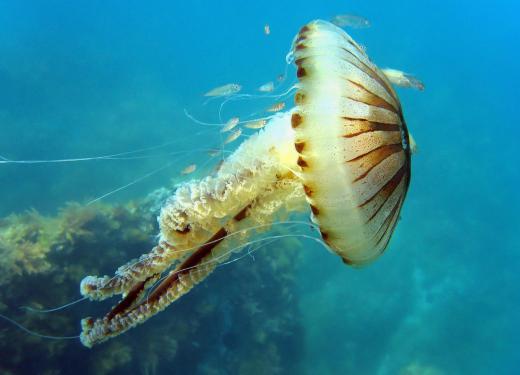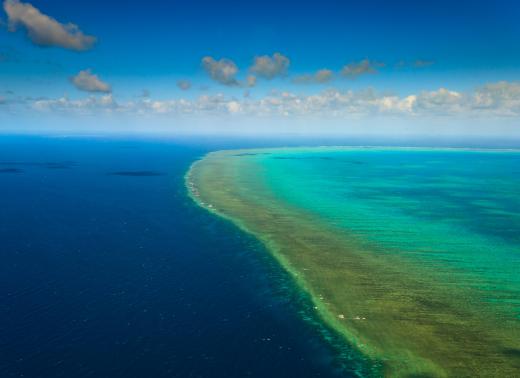What are the Major Groups of Cnidarians?
 Michael Anissimov
Michael Anissimov
Cnidarians, members of phylum Cnidaria, are among the simplest and most basal animals, splitting off from other phyla even before sponges did, as was discovered by molecular studies in 2008. They are among the earliest animal fossils with recognizable affinity to modern groups. The four main cnidarian groups (or classes) are Anthozoa (anemones, corals, etc.), Scyphozoa (jellyfish), Staurozoa (stalked jellyfish), Cubozoa (box jellies), Hydrozoa (Obelia, Portuguese Man o' War, Aequorea, etc.), and Polypodiozoa, which includes a single species, Polypodium hydriforme, a small parasite.
Like organisms in the Ctenophora phylum, cnidarians are diploblastic, meaning their body plan consist of just two germ layers, in contrast to all other animal phyla except sponges. This means that they lack true organs and a coelom, or body cavity. Though superficially simple, modern members of this phyla are actually genetically sophisticated and biochemically complex.

The phylum gets its name from the Greek word for sting because its members feed and defend themselves using specialized cells called cnidocytes, which contain small harpoon-like stingers. The release of these "harpoons" is among the quickest known processes in nature, occurring in as little as 600 nanoseconds and reaching an acceleration of around five million G's.

Cnidarians are either stationary, like the Anthozoa, or mobile, like all the other groups. Corals, among the most recognizable of the anthozoans, are known for the huge reef structures they create, which can be 328 ft (100 m) tall and cover areas as large as 133,000 sq mi (344,400 square km), as is the case with the Great Barrier Reef off the northeast coast of Australia. Like other members of this phyla, corals can reproduce either asexually, by budding, or sexually, by releasing sperm into the water.

These organisms have two major body forms: the polyp, which is a stalk with cnidocytes at its top, or the medusa, which is the iconic shape of the jellyfish. While anthozoans stay in the polyp stage their whole life, hydrozoans generally have life stages that go through both, while among jellyfish, the medusa body plan is dominant. A polyp can metamorphisize into a medusa by detaching from its substrate and developing specialized tissues in a process called strobilation, which allows a high throughput of offspring.
AS FEATURED ON:
AS FEATURED ON:















Discuss this Article
Post your comments